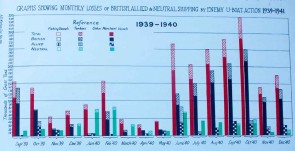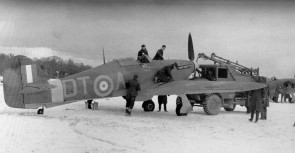You are currently browsing the monthly archive for January 2011.
Sahara Desert, Southeastern Libya. Free French forces have advanced from Chad to attack the Italian garrison at Kufra in the Sahara Desert. British Long Range Desert Group (attached to Free French) sends “T patrol” (30 men in 11 trucks) forward to reconnoiter but they are spotted by Italian aircraft at Bishara, 80 miles Southwest of Kufra. T patrol hides in a small wadi at Gebel Sherif where they are ambushed by Italian “Saharan company” motorized infantry (3 trucks destroyed, 1 man killed, 3 taken prisoner, 4 walk back across the desert).
Operation Compass. Australian 6th Division enters the town of Derna unopposed.
At 3.10 AM, U-94 concludes the attack on convoy SC-19 sinking British SS Rushpool (all 40 crew picked up by destroyer HMS Antelope). 6 ships (total of 33,723 tons) have been sunk in less than 24 hours.
Operation Compass. Derna, Libya. There is heavy fighting along Wadi Derna as elements of British 7th Armoured Division (brought North from Mechili) outflank Italian artillery overlooking the town. Italian commander at Derna General “Electric Whiskers” Bergonzoli, who recently escaped on foot from Bardia, withdraws his troops and artillery overnight.
At 6.49 AM, British cruiser HMS Naiad (part of Admiral Tovey’s task force searching for Scharnhorst and Gneisenau) spots the German warships in the Iceland-Faroes passage, heading for the Atlantic. Under strict orders not to engage superior British forces, Scharnhorst and Gneisenau turn around to go North of Iceland through the Denmark Strait.
Operation Compass. The harbour at Tobruk, Libya, is cleared of wrecks and opened to British ships. The first vessels in are troopship Ulster Prince (which takes Italian POWs back to Alexandria, Egypt) and supply ships Cingalese Prince, Rosaura and Chakla which unload men and supplies in a severe sandstorm. Tobruk will become an important supply point for the continued Allied advance across Libya. 100 miles Northwest along the coast from Tobruk, Australian 6th Division takes Fort Rudero overlooking the small town of Derna (capturing 290 Italian prisoners and 5 field guns). However, they meet stiff resistance from Italian troops and artillery dug in the far side of Wadi Derna (a steep ravine, a mile wide and 700 feet deep).
Operation Compass. 80 miles West of Tobruk, Italians troops and tanks pull out of Mechili, evading British 4th Armored Brigade (7th Armored Division) which has engaged them since January 24. With Italians in full flight West along the coastal road pursued by the advancing Australians, the failure at Mechili convinces British General O’Connor that a more decisive flanking move is required. O’Connor will order 7th Armored Division commander General O’Moore Creagh “you are going to cut the coast road South of Benghazi, and you are going now!”
General Alan Cunningham launches the Southern front in Italian East Africa. He sends Nigerian, Ghanaian, East African and South African troops of 11th African Division (commanded by British General Harry Edward de Robillard Wetherall) and 12th African Division (commanded by British General Reade Godwin-Austen) into Italian Somaliland from British-held Kenya. They meet little resistance from Italian forces who have withdrawn 100 miles behind the Juba River.
Operation Compass. 80 miles West of Tobruk, British tanks attack an Italian fort at Mechili in the Libyan desert. However, the British expect a speedy capitulation and are surprised by vigorous defense by Italian tanks of the Babini Armor Group. Losses are about equal on both sides and the British withdraw.
British SS Lurigethan is bombed and set on fire by a German Fw200 aircraft 200 miles West of Ireland (15 crew and 1 gunner killed, 35 crew rescued by corvette HMS Arabis). Lurigethan will be sunk by U-105 on January 26.
——- [1] is convinced, perhaps rightly, that the danger of the People’s Convention [2] racket is much underestimated and that one must fight back and not ignore it. He says that thousands of simple-minded people are taken in by the appealing programme of the People’s Convention and do not realise that it is a defeatist manoeuvre intended to help Hitler. He quoted a letter from the Dean of Canterbury [3] who said “I want you to understand that I am wholeheartedly for winning the war, and that I believe Winston Churchill to be the only possible leader for us till the war is over” (or words to that effect), and nevertheless supported the People’s Convention. It appears that there are thousands like this.











